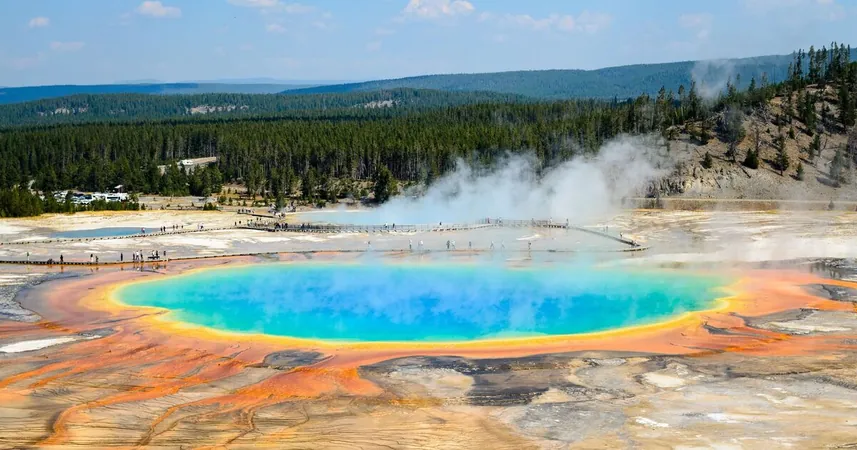
Alarming New Insights on Yellowstone Supervolcano: Eruption Fear Unlikely!
2025-01-03
Author: Ting
Yellowstone National Park: A Geological Marvel
Yellowstone National Park, famous for its stunning hot springs and mesmerizing geysers, attracts millions of visitors each year, eager to witness the natural marvels. Beneath this breathtaking scenery lies one of the world's largest active volcanic systems, posing fascinating yet daunting questions about its geological future.
Recent Research on the Supervolcano
Recent research published in the esteemed Nature journal has reignited discussions around the supervolcano, but fear not! Scientists have determined that an eruption at Yellowstone is highly unlikely. The underlying magma structures, characterized by their unique dispersal, suggest that while there may be considerable magma present, it is not well connected enough to trigger an eruption anytime soon.
Expert Insights
Lead author Ninfa Bennington, a geophysicist at the Hawaiian Volcano Observatory, assured The Washington Post that "Nowhere in Yellowstone do we have regions that are capable of eruption." This reassurance comes amidst growing concerns about volcanic activity in light of ongoing seismic monitoring.
Types of Magma Beneath Yellowstone
Interestingly, beneath Yellowstone, two primary types of magma coexist: basaltic and rhyolitic. Basaltic magma, which typically fuels eruptions around the globe, tends to be more fluid. In Yellowstone's case, however, it lies deep within the Earth's crust, making an explosive eruption highly improbable. Rhyolitic magma, on the other hand, is thicker and more viscous. It forms from the heating of surrounding rocks by basaltic magma, but even this requires a significant buildup of pressure to lead to an eruption.
Potential Eruption Scenarios
In the unlikely event of a volcanic blowout, experts like Michael Manga from UC Berkeley warn it could manifest as a catastrophic explosion, churning out massive quantities of ash akin to the consistency of asphalt from the well-known past eruptions of the supervolcano. Indeed, Yellowstone's turbulent history includes three catastrophic eruptions over the last 2.1 million years, with the most recent mild eruption taking place around 70,000 years ago.
Implications for Visitors
‘But what does it all mean for visitors?’ you might ask. Fear not! Current studies reveal that as the North American tectonic plate shifts over the volcanic hotspot, future volcanic activity is indeed expected to migrate northwestward—far from the visitor centers and scenic routes that showcase Yellowstone’s beauty.
Conclusion and Ongoing Research
The consensus is clear: While researchers remain vigilant, there’s no imminent threat of an eruption, enabling tourists to continue exploring this geological wonder in peace. With this newfound knowledge paired with continued advancements in monitoring techniques, we can appreciate Yellowstone’s awe-inspiring features, reassured that nature's fury is not lurking just beneath the surface.
Stay tuned for more revelations about this iconic landmark, as scientists work tirelessly to unlock its secrets!





 Brasil (PT)
Brasil (PT)
 Canada (EN)
Canada (EN)
 Chile (ES)
Chile (ES)
 Česko (CS)
Česko (CS)
 대한민국 (KO)
대한민국 (KO)
 España (ES)
España (ES)
 France (FR)
France (FR)
 Hong Kong (EN)
Hong Kong (EN)
 Italia (IT)
Italia (IT)
 日本 (JA)
日本 (JA)
 Magyarország (HU)
Magyarország (HU)
 Norge (NO)
Norge (NO)
 Polska (PL)
Polska (PL)
 Schweiz (DE)
Schweiz (DE)
 Singapore (EN)
Singapore (EN)
 Sverige (SV)
Sverige (SV)
 Suomi (FI)
Suomi (FI)
 Türkiye (TR)
Türkiye (TR)
 الإمارات العربية المتحدة (AR)
الإمارات العربية المتحدة (AR)